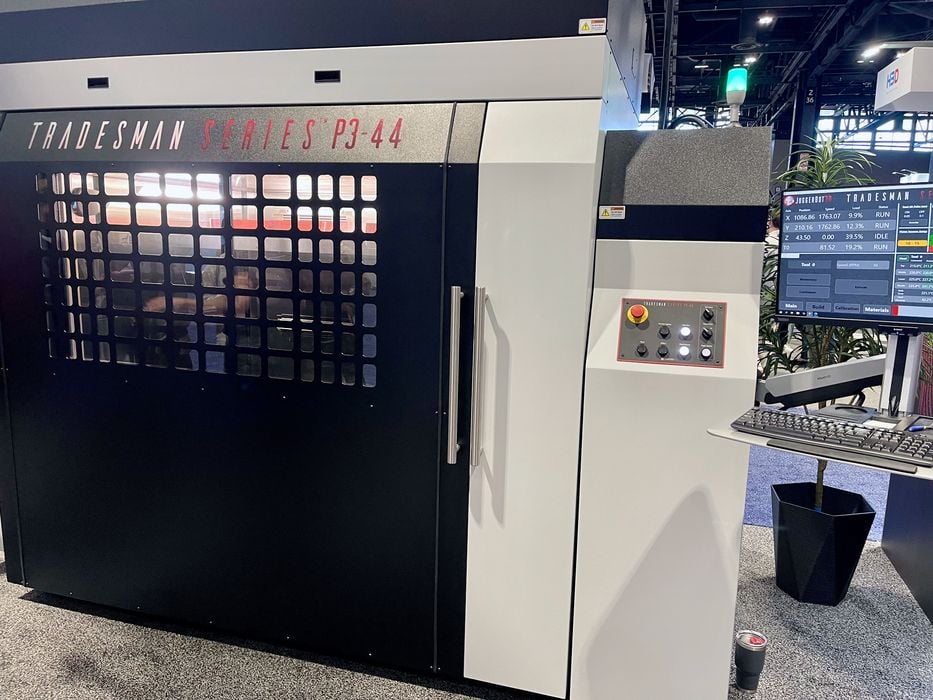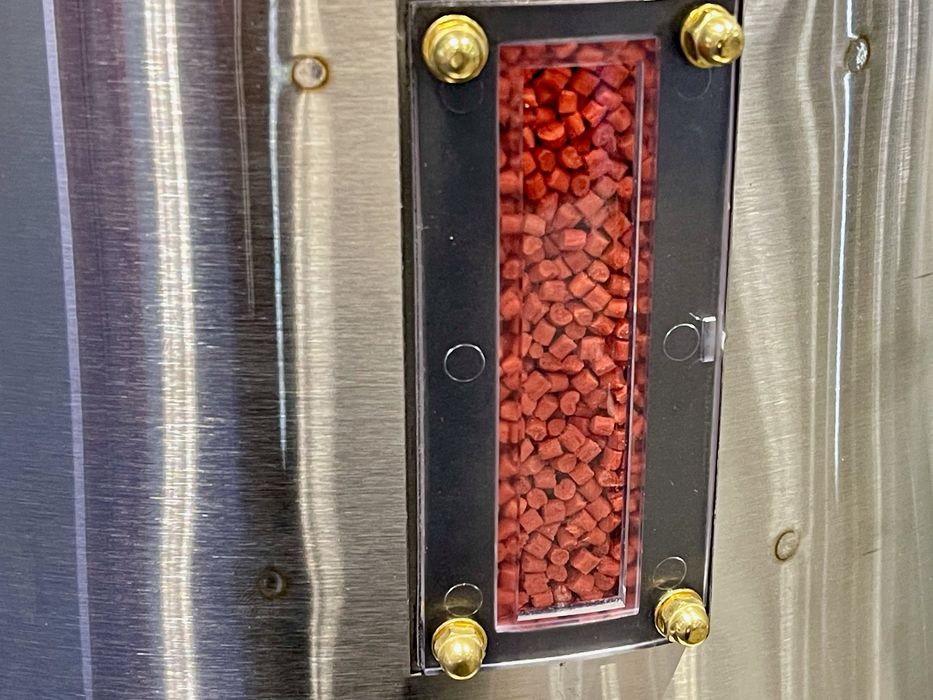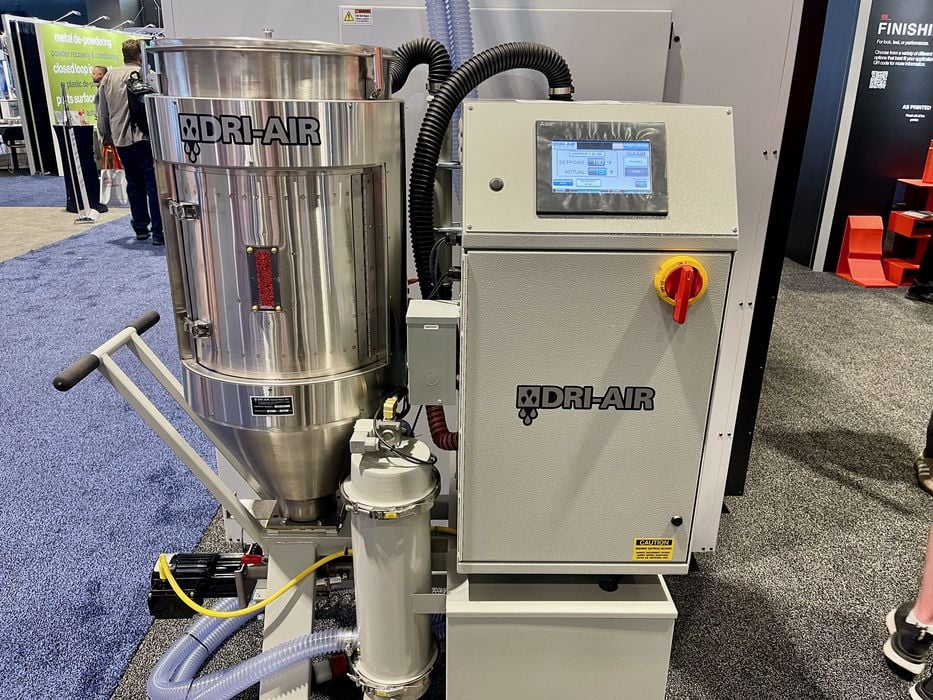
Juggerbot has been developing something they call a “material card”.
That’s something new Juggerbot has been cooking up. When I first heard the term, I thought, “Oh, that’s just their fancy name for a print profile.” Turns out, I was both right and wrong.
Indeed, it’s a type of “print profile” for their hefty Tradesman P3-44 3D printer. It hosts the usual parameters that align a material perfectly with a 3D printer, including print speeds, temperatures, and the like.
But, you may ask, why not just call it a “print profile”, like the rest of the world does?
Pellet Power: The Unique Element of Juggerbot’s Material Card

Well, that’s where the twist is. It has to do with Juggerbot’s 3D printer: it’s a pellet device. Instead of filament, it uses an input hopper brimming with standard injection molding plastic pellets as its print material.
The P3-44, with this approach, can manufacture large objects at a bargain, thanks to the significantly cheaper pellets compared to filament. After all, filament is made from pellets, making it a pricier alternative by default.
Now, back to the Material Card.
While filament-style 3D printers follow a standard list of parameters, pellet 3D printers require extra ones for optimal operation.
Pellets aren’t always uniform. They could be chopped or whole, vary in length or diameter, and their geometry might necessitate a unique style of “agitation” to guide them from the hopper into the hot end. They might even demand specific drying settings.

The gist is: managing a pellet system involves many aspects that simply don’t exist in filament machines. That’s why Juggerbot conjured up the “Material Card”: it comprises the regular print profile parameters, along with all the necessary parameters to manage a pellet configuration effectively.
The Future of Material Cards and Pellet 3D Printers
Remember, like a print profile, the Material Card pairs the printer (in this case, the Juggerbot P3-44) with a specific pellet configuration. A change in the pellets—even just their geometry—would result in a different print outcome.
So far, Juggerbot has birthed only one Material Card, but they aim to roll out many more by year’s end. That means P3-44 operators should have a variety of standard injection molding pellet types to choose from, ensuring high-quality 3D prints.
While the majority of today’s 3D printers use filament, resin, or powder, only a handful utilize pellets. From what I’ve seen, none seem to have devoted the level of attention Juggerbot has to fine-tuning print parameters for specific pellet types.
I wouldn’t be surprised if other pellet 3D printer manufacturers took a leaf out of Juggerbot’s book and developed their own versions of a “material card.”
Via Juggerbot
